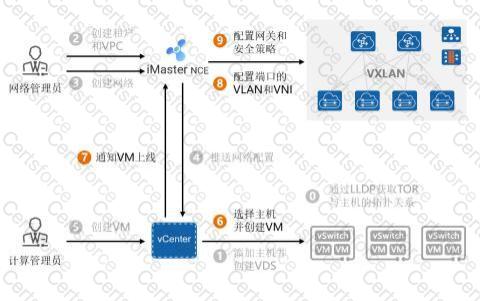Which of the following technologies does OpenStack use to implement a VM security policy?
iMaster NCE-Fabric supports the Layer 3 topology intersight function, which of the following is not included?
Which of the following options are included in the action type of a runbook in the CloudFabric network business open programmable overall solution?
When service packets are connected to a VXLAN network through a Layer 2 sub-interface, different flow encapsulation types need to be configured on different Layer 2 sub-interfaces
The same physical interface can access different data packets. Which of the following is NOT a stream encapsulation type that is supported by a Layer 2 sub-interface?
Which of the following descriptions of open source OpenStack Neutron components is correct?
In an iNOF network, which of the following information can be transmitted in an iNOF message?
In the CloudFabric solution, which of the following is the correct order in which VMs are launched in the computing linkage scenario: (1) Created by the computing administrator

VM;(2) iMaster NCE-Fabric obtains VM on-line information through VMM (3) The network administrator creates the corresponding virtual network through iMaster NCE-Fabric (4) iMaster NCE-Fabric senses the location of the VM and automatically delivers the mapping of VLAN and VNI
In Huawei's CloudFabric solution, in the scenario where the Border Leaf and Service Leaf are separated, what are the correct descriptions of the following principles for traffic orchestration between internal and external networks?
In a VXLAN network, VTEP1 sends an IRB route with an RT value of 100:1 to VTEP2 VTEP2 will drop the route?
Which of the following is not part of the analysis scope of the iMaster NCE-FabricInsight network snapshot function?